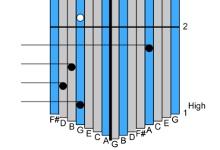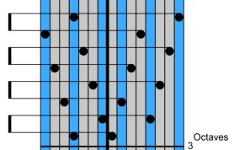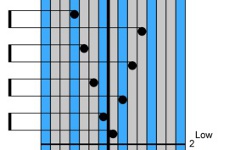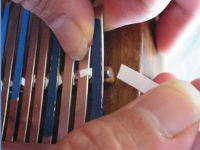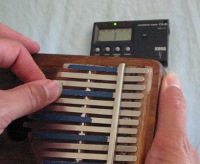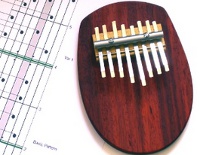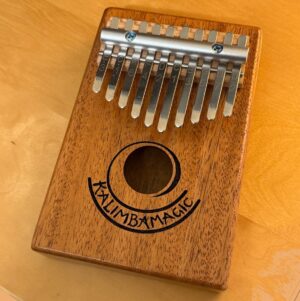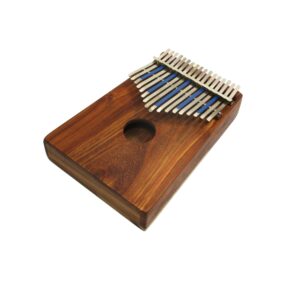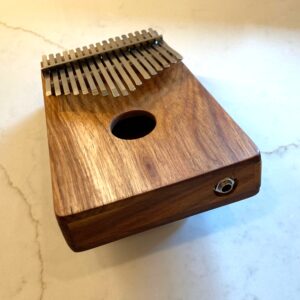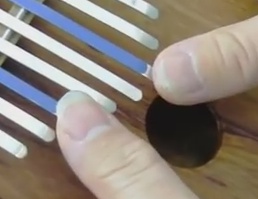
TIP: Stopping the tines
Usually when you pluck a tine, it sustains for about 5 seconds – but you can put a stop to that! One of the charms of the kalimba is how the tines ring clearly and slowly fade away. You cannot control exactly how long the tone will last, it has its own natural decay, like plucking a strong on a harp. Playing kalimba is a bit like playing piano with the damper open. But it doesn’t have to be that way. Sometimes you want a note to be staccato – ie, played very short. Why? Sometimes the music just calls for a short or abrupt note. Sometimes you need to
